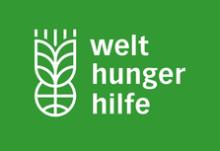Resource information
On 24 November 2020 the Land Inequality Initiative (International Land Coalition, OXFAM, Welthungerhilfe) launched its new research report "Uneven Ground: Land Inequality at the Heart of Unequal Societies", and a series of groundbreaking studies that reveal new insights and data proving that land inequality is rising.
In the new study released today, researchers say that land inequality is rising in Africa and globally. Worse, the unfettered realisation of land inequality trends would create a social and economic disaster of massive proportions on the continent.
The report, Uneven Ground: land inequality at the heart of unequal societies, is the first of its kind, shedding new light on the scale and speed of this growing phenomenon and providing the most comprehensive picture available today. The report was informed by 17 specially commissioned research papers as well as analysis of existing data and literature under a wide partnership led by the International Land Coalition, and in close collaboration with Oxfam.
Unemployment and reduced incomes are among the leading consequences of land inequality, with critical implications for Africa, with a large youth population. Large industrialised farms absorb fewer workers overall and tend to casualise the workforce, pushing real wages down. On the continent, where agriculture is still the largest employer and youth unemployment is a major challenge, the unfettered continuation of current land inequality trends would create a social and economic disaster of massive proportions.
New measurements, used by the report, show that the top 10 percent of the rural population captures 60 percent of agricultural land value, while the bottom 50 percent of the rural populations only control 3 percent of land value.
“In the framework of this project, a new way to measure land inequality was developed that goes beyond land size distribution captured through traditional agricultural census.” said Ward Anseeuw, co-author of the report and coordinator of the initiative.
The study finds that land inequality directly threatens the livelihoods of an estimated 2.5 billion people involved in smallholder agriculture, of which 33 million in Africa contributing up to 90% of food production, as well the world’s poorest 1.4 billion people, most of whom depend largely on agriculture for their livelihoods.
“Sub-Saharan Africa faces a dramatic job challenge to generate employment for its young, rapidly growing population. To provide jobs for the 28 million young Africans entering the job market in 2030, there is need to push for responsible and equitable investment on land,” says Audace Kubwimana, ILC Africa regional coordinator.
The report reveals that land inequality is fundamentally related to political inequality, particularly in societies where accumulation of land conveys political power. In Senegal, GOANA’s elite capture of policy and policy processes ensured that by 2010, over 657,000 hectares or around 17 percent of Senegal’s arable land was allocated to 17 private firms. Ten of the firms were Senegalese and the rest were foreign.
The authors also show that land inequality is central to other forms of inequality, and many of the continent’s crises. Increasing land inequality will have significant negative consequences for all Africa, on economic and social development, on the environment and on democracy and peace.
“As we move towards a post-Covid world, we will see increased pressure for fast economic gain at the expense of people and nature,” Mike Taylor, Director of the International Land Coalition Secretariat warned. Adding, “there is always, however, a more inclusive path to re-building our economies, that emphasises sustainable use of natural resources, respects human rights and addresses systemic causes of inequality.”
One per cent of the world’s farms operate 70% of crop fields, ranches and orchards, according to a report that highlights the impact of land inequality on the climate and nature crises.
Since the 1980s, researchers found control over the land has become far more concentrated both directly through ownership and indirectly through contract farming, which results in more destructive monocultures and fewer carefully tended smallholdings.
Taking the rising value of property and the growth of landless populations into account for the first time, the report calculates land inequality is 41% higher than previously believed.
The authors said the trend was driven by short-term financial instruments, which increasingly shape the global environment and human health.
“In the past, these instruments were only of concern to the markets. They didn’t affect us individually. But now they touch every aspect of our lives because they are linked to the environmental crisis and the pandemic,” said Ward Anseeuw, senior technical specialist at the International Land Coalition, which led the research along with a group of partners including Oxfam and the World Inequality Lab.
The study published on Tuesday, is based on 17 new research papers as well as analysis of existing data and literature.
It says previous calculations of land inequality were based exclusively on ownership and the size of individual farms. On this basis, land inequality narrowed until the 1980s, after which it became wider.





